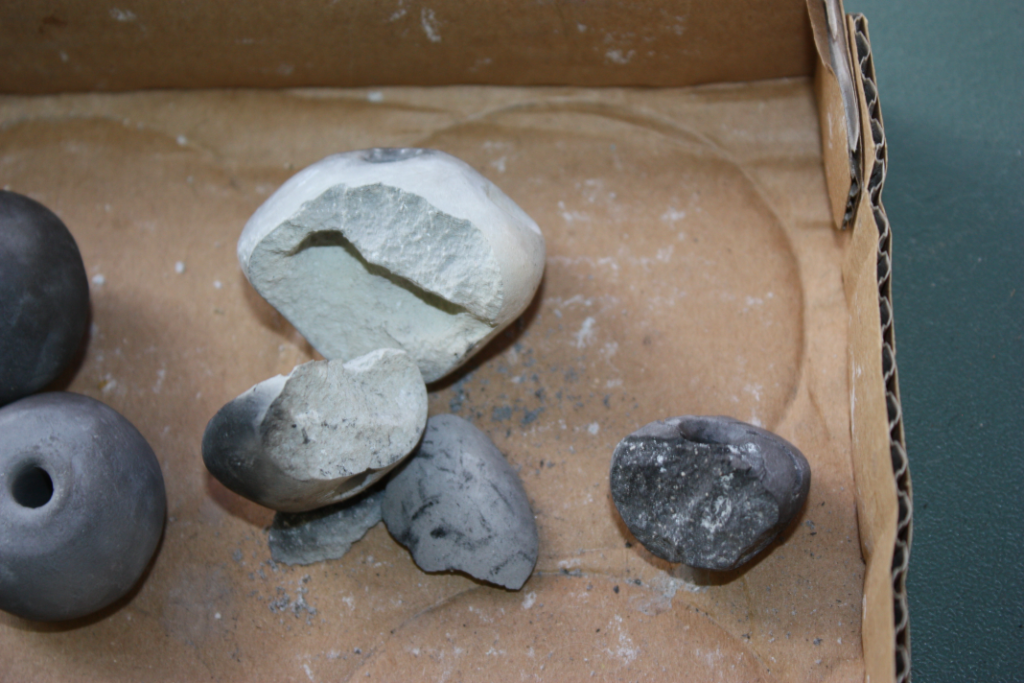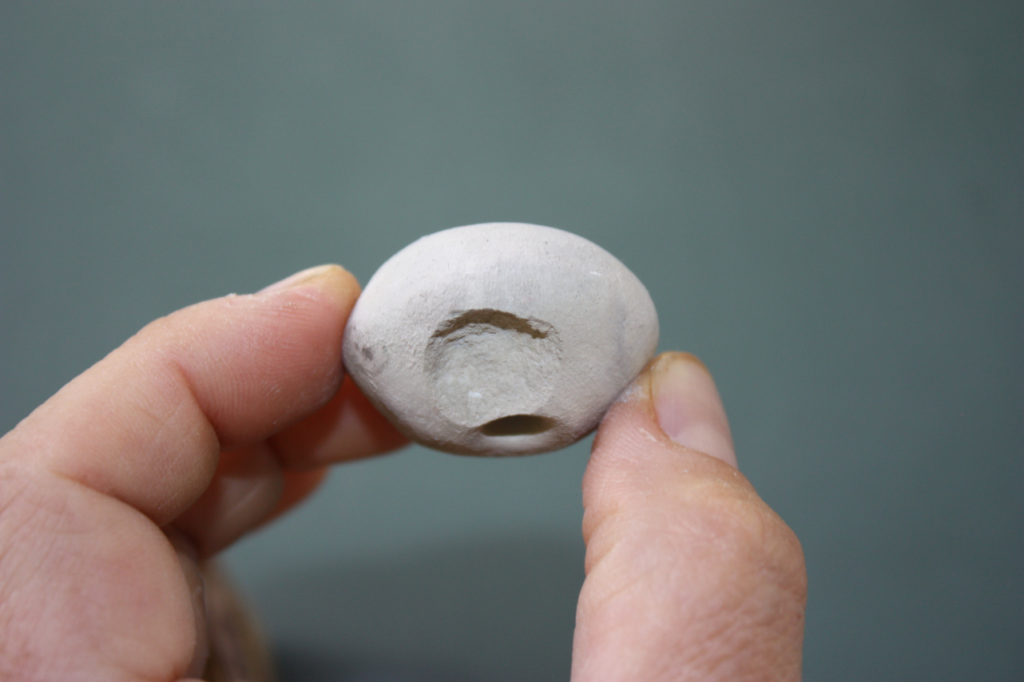Search the Blog
Latest Comments
Exploding Whorls and Salamander Snacks.
The spindle whorl firing is done - so now I have plenty of hand-formed spindle whorls again. This time around, there are some decorated ones, and quite a few of these are formed after actual examples from prehistoric finds. Though, of course, I cannot guarantee that their shapes and weights are close to the originals - especially their weight will probably be quite different even if the size and shape matches, as different materials and different amounts of water and temper make a huge difference in the density - and thus the weight at similar size.
This is one of the many reasons why making whorls and pit-firing them never gets un-exciting. It may be boring (forming whorl after whorl after whorl can be really mind-numbing), but there is always a good amount of insecurity left. Especially regarding firing.
Will they all get enough heat? How many of them will be completely black, or completely light? And most importantly:
How many of them will come out undamaged?
As the pit-firing procedure is only sort of controlled, some whorls in the batch usually come out more or less of damaged. The most common cause is probably a small air bubble that has gotten trapped inside, followed by adverse conditions when heating up, such as getting too much heat too quickly, or too much heat only on part of the piece. Or the clay being still a little bit too moist - even though I try to make sure that the whorls have enough time to really dry out.
Obviously, all these things are more probable on the really large whorls - and this batch, one of the big ones did die a spectacular death, giving out two very loud bangs right after I started the firing. It was accompanied in its venture to explode by two smaller ones... so a total loss of three whorls for the firing batch.

While this is, obviously, a total loss, there are always some whorls that only lose a little chip off their surface. They are otherwise still okay, and they can work just like undamaged ones - but of course they are not making their way into my for-sale stash of whorls.
I call these whorls "Salamander Snacks" because, as every reader of medieval bestiaries knows, the salamander can live in the fire unharmed. So obviously, the reason for how these whorls look is that a salamander living in the fire got a little peckish and took a nibble (or in some cases, a bite) out of a whorl.
While last time around, I had quite a few salamander snacks in the batch, this time it was only a single one - but the salamander has been quite hungry, it seems, as it took a large-ish bite:

I hope it enjoyed its snack!



